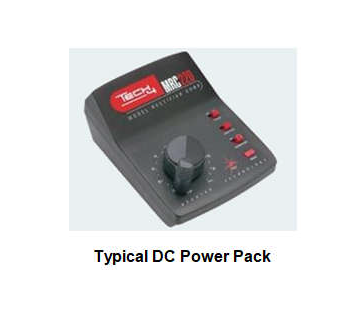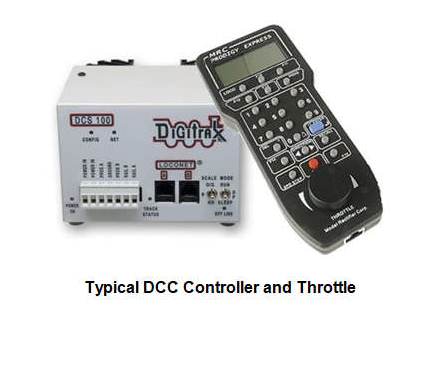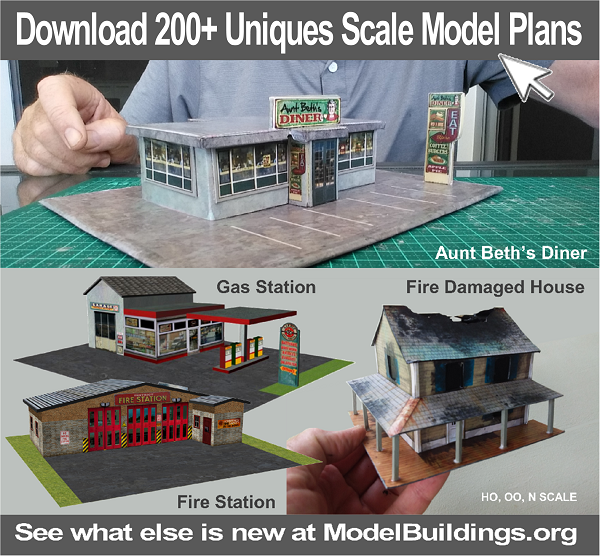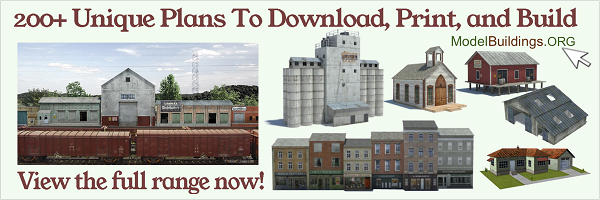Explaining In Simple Terms How Currents Works On Model Railroads
Virtually all the equipment in the model railroading hobby is electrically powered. Although Lionel “O” scale and American Flyer “S” scale trains are powered by alternating current transformers, nearly all other scales are powered by direct current power packs. This is a good thing to keep in mind if you are looking for a used bargain. It is not healthy for your locomotives and accessories to try to deal with the wrong type of power.


For the purposes of this article, the discussion will always refer to DC power. There was one interesting HO scale locomotive that appeared several years ago that was actually powered by live steam, but it was rather pricey and no longer appears in commercial catalogs or on the retail market.
© Copyright http://www.modelbuildings.org All rights reserved.
Most power packs have two outputs. One output is a variable voltage that powers the locomotives, typically from 0-12 VDC. The variable voltage operates the motor or motors and the lights in the locomotive, and the amount of voltage determineslocomotive speed. The other output is a constant 12 VDC, which is used to run accessories such as switch machines, block signaling, and lighting. Each power pack has a current rating as well. The amount of current the power pack can supply translates roughly to the number of locomotives it can simultaneously power. A typical HO scale locomotive will draw around one -half an ampere of current under load, so you can use this rule of thumb to purchase the appropriate sized power pack for your layout. Boxed trainsets at one time included a small power pack sufficient to run the locomotive, but the more recent trend has been to only supply locomotive and rolling stock in boxed sets, with the power pack choice left up to the purchaser. If you are buying a boxed set, be sure to verify that the power pack is not included and plan to purchase one. Recommended resource http://www.dccmodeltrains.org
If you stay interested in the hobby beyond the boxed train set stage, you will soon be thinking of acquiring more locomotives. When you get to the point of running more than one train, the next consideration should be how to throttle them. If you just put the second locomotive on the same track as the first, you’ll find that the power pack throttle is in control of both. Unless you wish to operate this way (very inconvenient!), you’ll want to devise some method of individual throttle control. In the earlier days of model railroading, this was done by dividing the layout into power blocks with switches to control the voltage and a throttle arrangement for each block to operate the trains. This method becomes cumbersome very quickly, since any changes to the electrical arrangement can lead to extensive rewiring of much of the layout.
The development of computer chips came to the rescue some years ago. Now days, the Digital Command and Control, or DCC, system allows individual control of locomotives with relative ease. A command transmitter device is attached to the rails, and each locomotive has a command receiver and motor/light control unit inside that interprets throttle and accessory commands from the transmitter, and sets the motor speed and light and/or sound condition accordingly.
Don’t run your trains too fast. This is something most beginners do. Fast trains have more chance of derailing and they don’t look so real. On a real railroad the locomotives build up speed gently and they slow down gently to a smooth stop. They don’t take off like a rocket!
When purchasing a locomotive with a decoder installed, look for the wording “DCC equipped”, or “Factory installed decoder”, or “W/DCC”, or wording like that.

Be careful though, because the words “DCC Ready” usually means that the locomotive is capable of having a decoder installed and that one is NOT already installed. I repeat, “DCC ready” usually means there is NO decoder fitted, but the wiring inside the locomotive is terminated with a socket, ready for addition of a “Plug and Play” decoder. This is an easy installation, no soldering.
If you are still unsure whether or not a locomotive has DCC status, you can try this test. Place the locomotive on the program track of a DCC system. See if the command station can read CVs… and if it can’t… then no decoder is fitted. Also, without a decoder fitted, the loco would “hum” with the throttle set at “0”.
If the locomotive responds to the throttle on a DC system, then either there is NO decoder, or the locomotive may have a decoder that has analog operation enabled.
If in doubt, it is always best to get clarification from the hobby store staff, or from the manufacturer or person supplying the locomotive.


